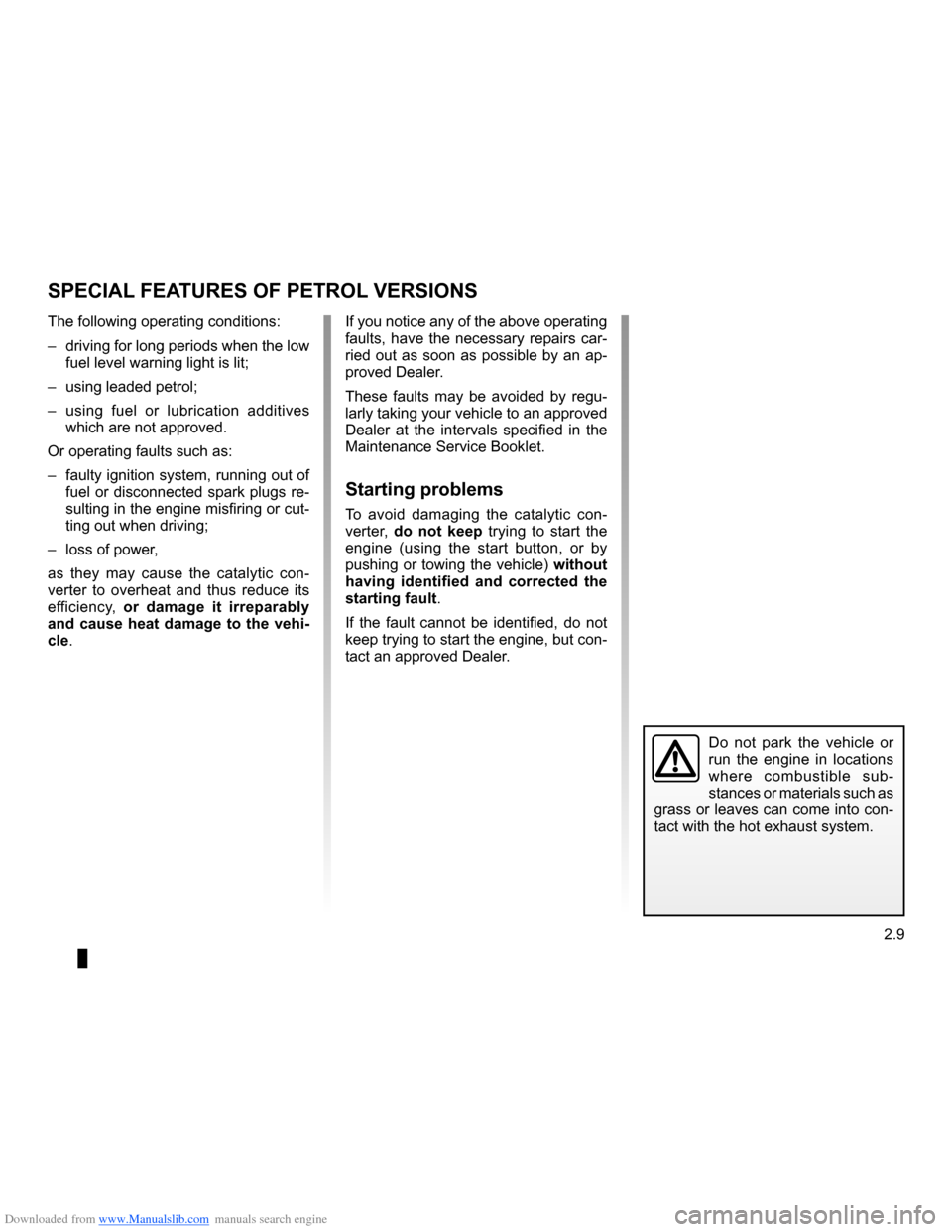fuel additives RENAULT CLIO 2009 X85 / 3.G Owners Manual
Page 101 of 264

View, print and download for free: fuel additives - RENAULT CLIO 2009 X85 / 3.G Owners Manual, 264 Pages, PDF Size: 15.68 MB. Search in RENAULT CLIO 2009 X85 / 3.G Owners Manual online. CarManualsOnline.info is the largest online database of car user manuals. RENAULT CLIO 2009 X85 / 3.G Owners Manual PDF Download. Downloaded from www.Manualslib.com manuals search engine special features of petrol vehicles ........(up to the end of the DU)catalytic converter..............
All product names, logos, and brands are property of their respective owners.